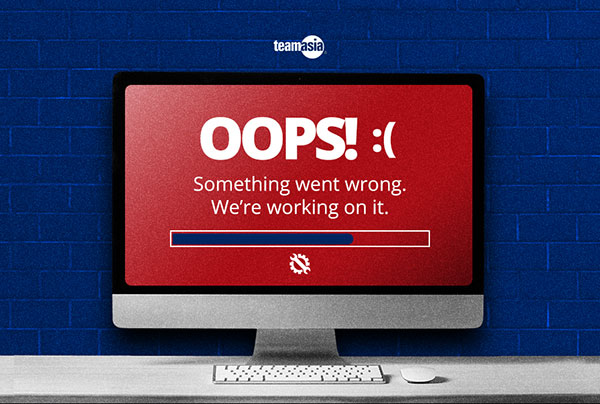7 Steps On How to Start An Ecommerce Business In Philippines

By: Chiara Quiocho, Digital Media Associate
Countless articles will tell you that e-commerce in the Philippines is a rapidly growing sector. It has also changed people’s buying behavior, providing a type of convenience that traditional shops can’t. This was evident at the start of the COVID-19 outbreak, when consumers chose to buy things from e-commerce sites to stay safe and lessen the chances of the virus spreading. You’ve probably bought something online yourself and now, you’ve seen what this booming industry has to offer and are eager to be part of it.
Here are 7 steps that’ll help you get started on a successful e-commerce website in the Philippines:
1. Create a functional e-commerce website
Would you buy from a beautiful store or a run down one? Think of your e-commerce website in the same way. The design of your website can go a long way in convincing people to buy from you, but looks aren’t enough. The user experience (UX) of your website is also a big deciding factor for how much you’re going to sell. If your website is difficult to navigate or doesn’t have a clear path to completing a transaction, you could lose customers who will exit your website in frustration or confusion.
You also need to make sure that your website functions on multiple web browsers. For example, Safari is the default browser on Apple devices. You could be losing a potential customer who is an iPhone user if your website only functions properly on Google Chrome.
Make sure your website also works on various digital devices. Studies on e-commerce in the Philippines show that most people browse their mobile devices, and Hootsuite and We Are Social’s data show that 89% of Filipinos use mobile phones as opposed to only 38% that use laptops or desktop computers. So with the market you are in, being mobile-friendly is really important.
2. Provide a variety of payment options
Data from The World Bank shows that credit card ownership among Filipinos is only at 2% due to the fear of credit card debt in the Philippines. Therefore, e-commerce in the Philippines demands a variety of payment options aside from the more common credit card or PayPal options. Here are some of the options you need to look at for your customers:
- Cash-on-delivery (COD)
- Online bank transfer
- ATM payments
- Over-the-counter bank transfer
- Digital wallets like G-Cash or PayMaya
- Payment Centers
- Payment Gateways like Dragonpay
3. Choose reliable and affordable shipping partners
For a lot of people who use e-commerce in the Philippines, shipping is a big consideration and even a nuisance. After all, who wants to pay an extra ₱100? People easily forget that the shipping fee is, more often than not, cheaper than the commute or the gasoline they would have expended going to a brick-and-mortar store. Consider waiving the shipping fee. A common practice among e-commerce websites in the Philippines offer free shipping after customers reach a certain amount with their order.
Price isn’t the only thing you should consider when selecting shipping partners. The way the packages are handled also affects whether a user buys from your e-commerce website again. Your customers aren’t going to risk purchasing from you again if their new gadget arrives cracked.
Speed is another factor to consider when choosing your shipping options. Unlike buying from a physical store, people will need to wait for their product to be delivered. Without that instant gratification, your customers will feel impatient or frustrated if it takes a while for their product to arrive. While most shipping providers can take a few days, you can also consider options like Grab Delivery which offers same-day deliveries.
4. Utilize SEO and Google Ads to get traffic
No matter how visually appealing or user-friendly your website is, you won’t get any sales if no one can find your website. One of the easiest ways to get customers is through search engines like Google, Yahoo or Bing. After all, search engine users are high-intent users. In other words, they already intend to buy something when they search for a keyword related to a product or service.
The moment you work on your website, you need to ensure that search engine optimization (SEO) best practices are applied to your website. A website with good SEO is more likely to rank as the first result on search engine results pages. People are more likely to click on the first results when using search engines so reaching the first page and becoming the top-ranked site are vital for healthy website traffic.
SEO is a complex process that starts even before your website is built. After all, the structure, the text and the way your website looks all play important roles in getting your website to the first page of search engine results.
Another way to get more people to go to your website is through Google Ads. Google offers a variety of ad formats such as text ads on search engine results pages or as banners on websites.
Consider hiring a digital marketing agency in the Philippines if you feel overwhelmed by the more technical aspects of SEO and search engine marketing. A holistic digital marketing agency can help you every step of the way, from the initial keyword research to creating SEO blogs to help bolster your search engine rankings.
5. Market your site on social media
Another must-have for e-commerce in the Philippines is using social media to drive awareness, interest and sales. A study by Hootsuite and We Are Social in 2019 shows that 76 million Filipinos spend an average of 4 hours and 21 minutes a day on social media. Having a presence on leading social media platforms is critical to getting the word out that your online store exists.
Keep in mind that there are a lot of social media platforms with different functions and demographics. For example, your trendy clothing store might do better on Instagram than LinkedIn. Knowing your audience is the first step to not only deciding which social media platform to build a presence on, but also to building your social media strategy for a Philippine audience.
Social media platforms offer a variety of methods and tools to get people engaged and going to your website. From a plethora of ad formats with different objectives to the ability to integrate your online store with your Facebook and Instagram accounts, knowing which platform and its tools will help you make your social media page drive sales.
Most brands, from industry juggernauts to grass-roots startups are already on social media, so you need to be able to come up with a strategy that not only works, but works specifically for your brand.
6. Analyze data and optimize
The beauty of digital marketing is that everything is measurable. Whether it’s the amount it takes to get a Like on a Tweet or how many people found your website through Google, you can find all this data directly on your social media or e-commerce platform or through data-analysis platforms such as Google Analytics.
Google Analytics provides a lot of data on conversions, and will only start recording data once you set it up for your website. The earlier you can get your Google Analytics account up and running, the sooner you can start measuring your website performance and marketing efforts. You can even install a Facebook Pixel on your website to track whether your efforts on social media are translating to success for your e-commerce website.
Another challenge you will face is the amount of data at your fingertips. There is a lot of data to sift through and it might be difficult to know not only how to find the data you need, but how to get it and what to do with the data. Hiring a digital marketing agency in the Philippines could help you understand and analyze the data from these platforms. After all, it isn’t enough to know the digital marketing metrics that matter, you also need to know what to do with this data to improve your marketing efforts.
7. Apply customer retention strategies
Now that you have your website up and running and getting customers, you need to consider customer retention. According to Shopify, e-commerce websites make more money from returning e-commerce customers than acquiring new ones. It’s not only easier but cheaper to get people to buy from you multiple times than it is to get a new customer to buy for the first time.
Customer retention strategies work to increase not only the number of repeat customers but also the profitability of already existing customers. You need to give loyal customers more reasons to keep coming back and this can be achieved through strategies like email marketing campaigns or leveraging on the fear of missing out with limited-time sales.
Need more help getting started with e-commerce in the Philippines? Contact our digital marketing team today! From building your website to cross-platform digital marketing efforts that keep customers coming back, we help brands reach the next level with their e-commerce businesses in the Philippines.





